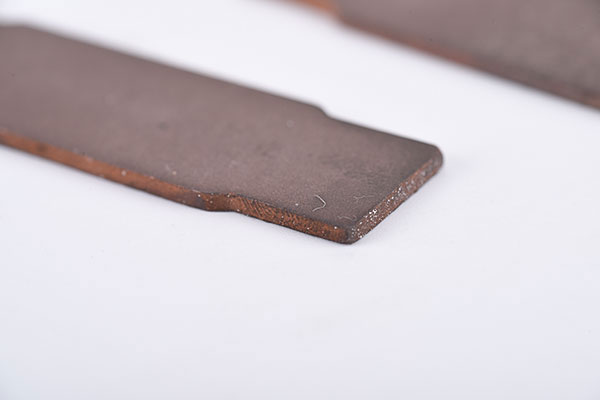Description
Copper tungsten material list :
| Brand and No. | Chemical Components% | Physical Properties | ||||||
| Cu | Total Impurities
≤ |
W | Density(g/cm³) ≥ | Hardness HB ≥ | Resistivity(μΩ:cm) ≤ | Conductivity IACS%≥ | Bending Strength Mpa≥ | |
| CuW50 | 50±2.0 | 0.5 | Bal | 11.85 | 115 | 3.2 | 54 | |
| CuW55 | 45±2.0 | 0.5 | Bal | 12.30 | 125 | 3.5 | 49 | |
| CuW60 | 40±2.0 | 0.5 | Bal | 12.75 | 140 | 3.7 | 47 | |
| CuW65 | 35±2.0 | 0.5 | Bal | 13.30 | 155 | 3.9 | 44 | |
| CuW70 | 30±2.0 | 0.5 | Bal | 13.80 | 175 | 4.1 | 42 | 790 |
| CuW75 | 25±2.0 | 0.5 | Bal | 14.50 | 195 | 4.5 | 38 | 885 |
| CuW80 | 20±2.0 | 0.5 | Bal | 15.15 | 220 | 5.0 | 34 | 980 |
| CuW85 | 15±2.0 | 0.5 | Bal | 15.90 | 240 | 5.7 | 30 | 1080 |
| CuW90 | 10±2.0 | 0.5 | Bal | 16.75 | 260 | 6.5 | 27 | 1160 |
The material combines the properties of both metals, resulting in a material that is heat-resistant, ablation-resistant, highly thermally and electrically conductive, and easy to machine.
Parts are made from the CuW alloy by pressing the tungsten particles into a desired shape, sintering the compacted part, then infiltrating with molten copper. Sheets, rods and bars of the alloy are available as well.
Commonly used copper tungsten alloy contains 10–50 wt.% of copper, the remaining portion being mostly tungsten. The typical properties of the alloy depend on its composition. The alloy with less wt.% of copper has higher density, higher hardness and higher resistivity. The typical density of CuW90 alloy, with 10% of copper, is 16.75 g/cm3 and 11.85 g/cm3 for CuW50 alloy. CuW90 has higher hardness and resistivity of 260 HB kgf/mm2 and 6.5 µΩ.cm than CuW50.
Please talk to us for technical support or inquiry. Contact right now, thanks.



